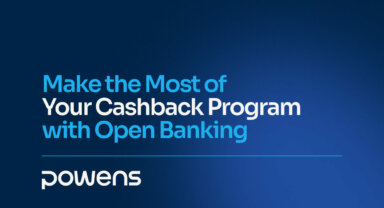While PSD2 has provided the regulatory framework for Open Banking in Europe, APIs (Application Programming Interfaces) have emerged as the rails that make Open Banking possible from a technological point of view. And there is no end to their growth in sight, with Open Banking API calls predicted to increase by almost six times from 102 billion in 2023 to 580 billion in 2027.
Open Banking APIs are the key to innovation in the financial industry, accelerating new product rollouts, improving operational efficiency, and boosting customer experiences.
In this article, we’ll take a look at the role played by APIs in Open Banking and the impact on the wider financial services industry.
The role of APIs in Open Banking
In Open Banking, APIs let banks connect with third-party services with the customer’s consent. This allows third parties to access real-time financial information safely to provide services like budget management, investment advice, and open banking-powered account-to-account (a2a) payments.
At its core, Open Banking is about removing barriers between financial institutions, and safe access to data. APIs provide the pipelines for this data to flow, giving third-party services access to financial data and payment information on a consumer’s behalf –– legally, securely, and in real time.
Security and safety
Open Banking is governed by legal frameworks like the PSD2 (The Second Payment Services Directive), which regulates European digital payment services. It requires banks to allow third-party providers to retrieve customers’ account data –– with their explicit consent –– through APIs, making sure these connections are secure and that customer data is protected.
This is good news for consumers, giving them access to personalized and convenient services, based on their financial situation and behavior.
Authorization frameworks like OAuth 2 control how third parties access personal banking data without exposing users’ passwords. This security and privacy is vital when carrying out actions on behalf of users.
The customer experience
Open Banking innovation, powered by APIs, has led to the creation of financial management applications that are changing how customers can access and interact with their banking data.
A great example is Pennylane, a comprehensive financial tool that simplifies financial management for SMEs, letting you connect all your bank accounts and manage them from one place. APIs make it possible for this data to be shared between your banks and the app automatically, in real-time, and with your permission.
With a secure and reliable connection, you can get 24/7 access to a full overview of your finances in one app, without wasting time logging into each of your accounts to add up all the numbers yourself.
Industry-wide innovation
One of the main objectives of Europe’s Open Banking regulations was to create a legal framework for existing innovations that were taking place, as well as boosting further innovation, Thanks to APIs, that has certainly changed. Take France, for instance: Several years ago, French residents had only a few options, mostly limited to traditional banks from that country, when opening a bank account.
APIs play a key role in financial innovation because it is the technological backbone that allows the Open Banking directive to come to life. In other words, it is the technology enabler of innovation, allowing financial information to flow much better. Innovators can thus simply plug in existing API-based financial solutions to roll out new products and services quickly, cheaply, and securely. They don’t need to develop everything themselves anymore and also have minimal work when it comes to integrating these solutions, reducing the risk and impact of business failure and thus lowering innovation deterrents.
Now, businesses can create products that would otherwise be unimaginable. Tools like real-time financial dashboards, personalized spending advice, and automated savings plans can give tailored advice and recommendations to customers based on their actual spending and income.
The potential of APIs in Open Banking for your business
With expectations constantly increasing, customers now demand more control over their financial data and greater insight into their financial lives than ever before. Connecting traditional banking systems to innovative fintech solutions with APIs means businesses can meet these expectations.
At Powens, our Embedded Banking & Open Finance Platform allows businesses to harness the potential of Open Banking APIs. This helps organizations like Finfrog to be more customer-centric, data-driven, and agile. Finfrog’s Founder and CEO, Riadh Alimi, told us, “Connecting to our customer’s bank accounts, thanks to the Powens API, is central to our scoring model. This enables us to obtain reliable, real-time, tamper-proof information and notify our loan decision to the customer in less than 24 hours.”
Get started with Powens today and discover how to use Open Banking to exceed expectations with personalized customer experiences.

 Dec 12, 2023
Dec 12, 2023 















